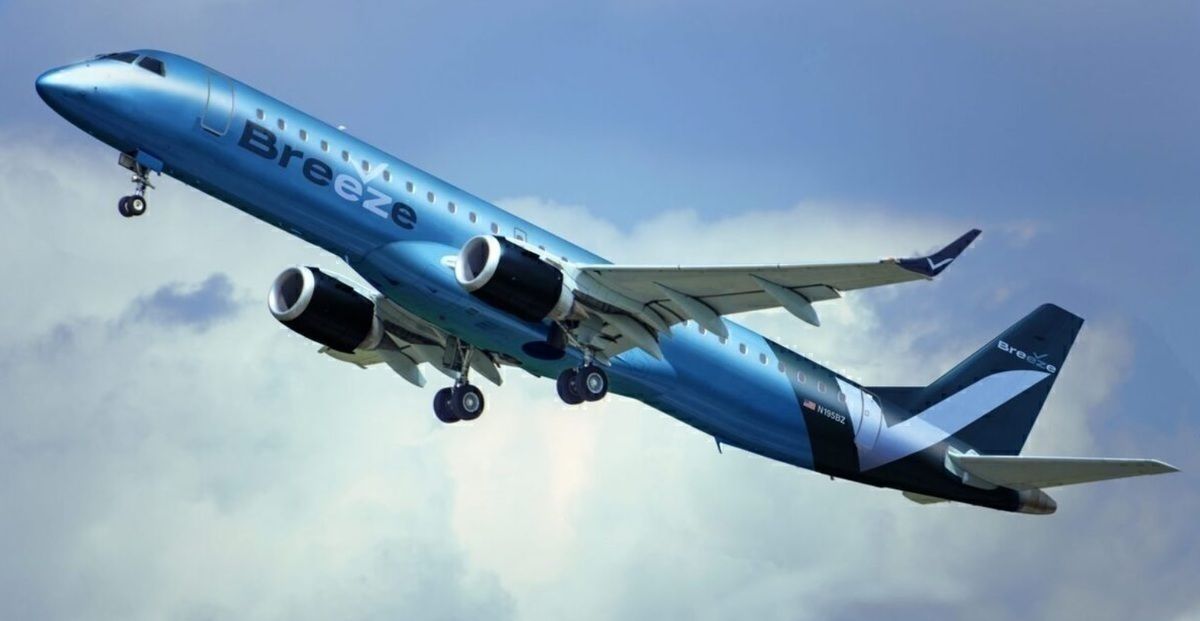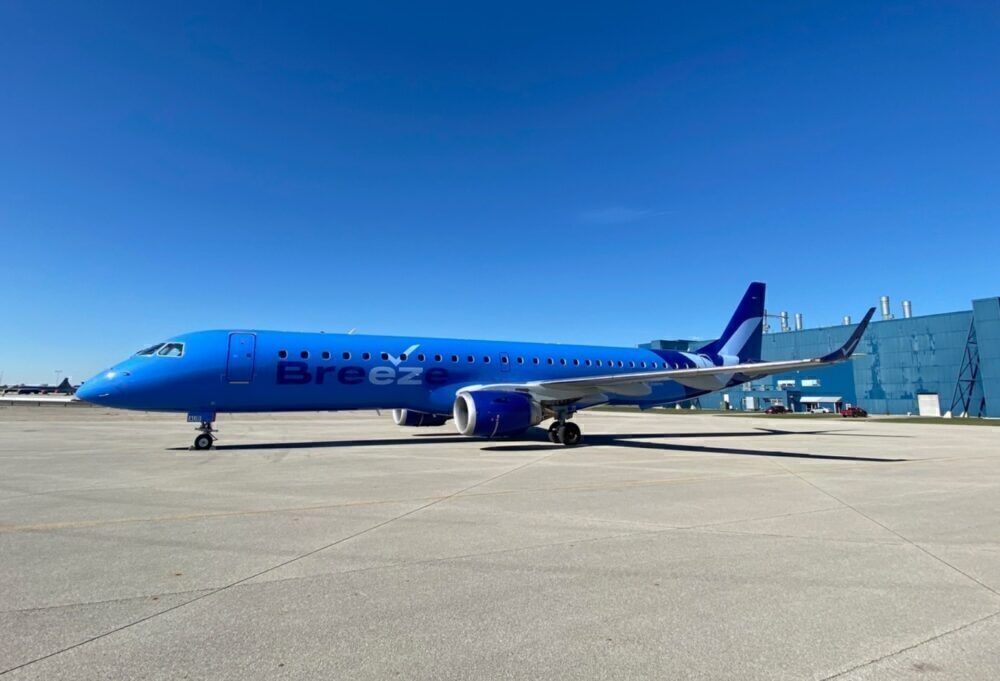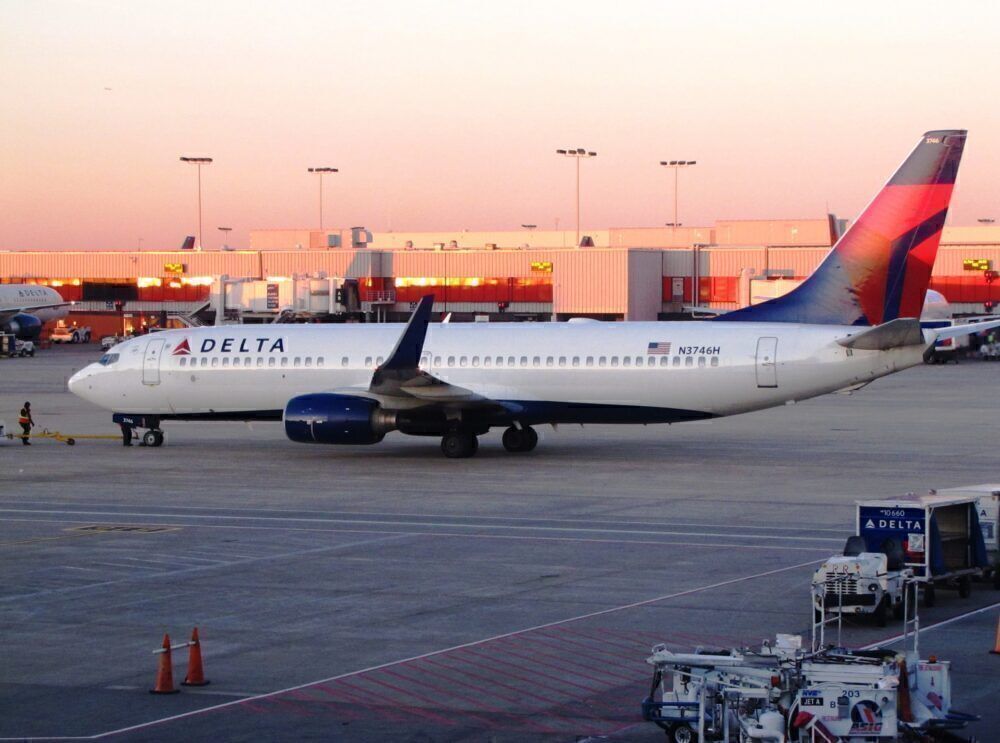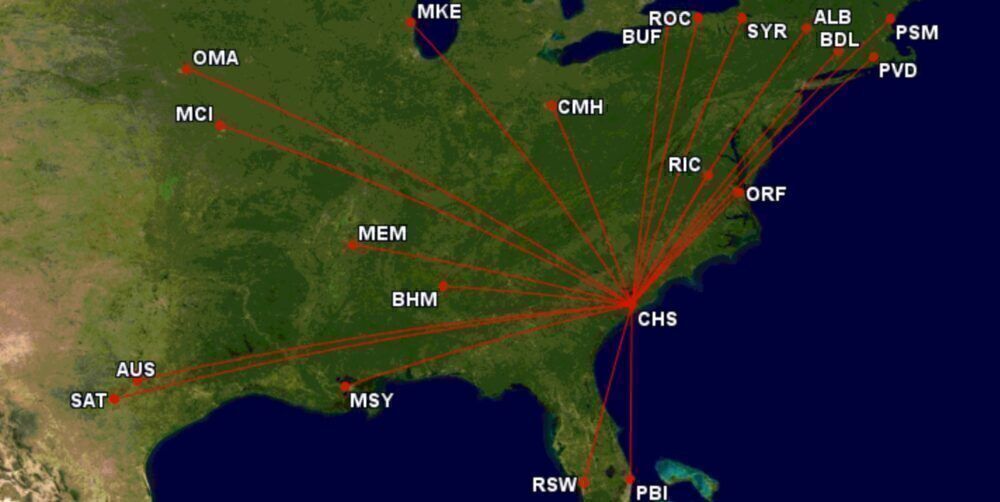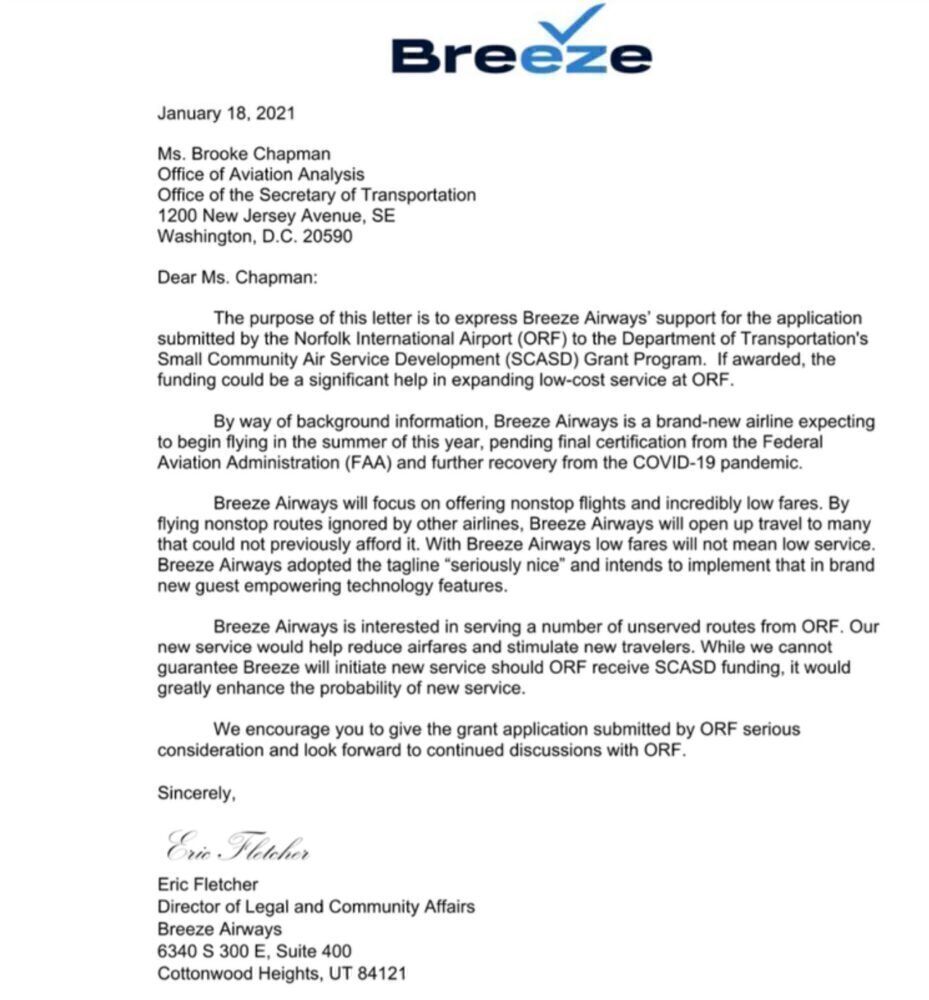Has Breeze Airways let the cat out of the bag by saying that Charleston and possibly Panama City and Tampa could be stations for flight attendants? Will Charleston be its first, or at least an early airport on its route map? It is fast-growing, mid-sized, and underserved.
Breeze Airways has given its clearest indication yet on what could be its first – or at least early – airports. Speaking about hiring flight attendants, David Neeleman was recently quoted in a KSL.com article:
"We're going to be hiring 20, 30 people every month. The training will be done in Utah, Neeleman said, and then students will be stationed in Charleston, South Carolina, and possibly other cities like Panama City and Tampa, Florida."
As Breeze put in its filing to the Department of Transportation:
"In March 2021 [since pushed back to the summer], Breeze plans to introduce scheduled service on three routes from a southeastern United States airport to four points northeast, and from another airport farther south to four points in the northeast, southeast, and the southern plains."
Stay informed: Sign up for our daily and weekly aviation news digests.
Charleston and the Northwest Florida beaches
Charleston and Panama City would make sense for Breeze. Both are mid-sized and underserved, and both are heavily dependent on hub services. Demand could easily be stimulated on new routes from being non-stop, offering lower fares (than high fares via hubs), and, as Breeze says, a better product. The true hub-busting ‘twice as fast for half the price’.
Tampa (and Orlando) would also make sense, especially if people have misinterpreted – among the intentionally clear-as-mud statements – what Breeze meant by mid-sized and underserved. Perhaps it meant such cities from huge leisure destinations. Kind of Allegiant-like, just from the main airports.
It is also believed that Breeze is hiring dispatchers for Islip, Long Island, another airport that would fit into its apparent network strategy. Perhaps Charleston-Islip will be one of its first routes.
Charleston coming?
Charleston might be Breeze's first, or at least early, airport and it would make sense. It was the US' fourth-fastest-growing airport between 2011 and 2019, with over 2.5 million seats added – up by 77%. It jumped 14 places in the top-100 US airport list, from 76 to 62.
In 2019, around 40% of passengers connected from Charleston, booking data from OAG Traffic Analyser reveals, showing that it's clearly underserved by non-stops despite its big and growing tourist pull. Allegiant has been adding non-stop routes and will this year have eight from Charleston – but many opportunities remain.
Charleston's top-20 unserved routes
Charleston's top-20 unserved domestic routes within roughly 1,000 miles had over 400,000 passengers in 2019. And with an average distance of just 698 miles, they'd be well within the one-to-two-hour sweet spot favored by low-cost carriers.
|
Charleston to/from… |
Est. round-trip point-to-point demand |
|---|
In Europe, Ryanair and Wizz Air often start new routes with ~5,000 indirect passengers and then strongly stimulate demand. Charleston's top-20 vary from almost 13,000 to over 35,000. These include Columbus, which has significant indirect demand despite Allegiant operating Charleston to Columbus Rickenbacker.
Two other markets that were unserved, Orlando and Tampa, both with around 30,000 passengers, are now served by Silver Airways and its ATRs.
Naturally, the likes of Charleston-Islip had few existing passengers, but this excludes all-important leakage to New York JFK and La Guardia which could likely make it a very possible route, demand-wise.
The hub-buster
Breeze’s hub-busting network strategy will likely involve unserved routes on a low frequency and strongly capacity-controlled basis, so driving up seat load factors.
Breeze will initially operate Embraer 190s, with its A220-300s coming later. They are not as low-cost on a seat basis as A320s/B737-800s, but they have relatively low trip costs. They'll probably nicely suit the airline’s position while not having too many seats to fill and therefore not requiring unnecessarily high discounts. Likewise by operating less often on less demanded days.
Actively targeting airports
Not surprisingly, Breeze is actively seeking financial assistance as a means of working out which airports to serve and develop. This is very commonly done in Europe and elsewhere, with the thought process being: if we get X, we'll be more likely to serve you. And in exchange, we'll provide you with Y passengers annually.
The startup carrier sent the following letter about Norfolk – another very underserved airport with lots of fairly large unserved markets.
Fayetteville, Arkansas, has also been the subject of such a letter, although in reality many dozens would have been sent concerning different airports. The heat is turning up, and it's getting more exciting.
What do you think Breeze's early airports might be? Comment below!

